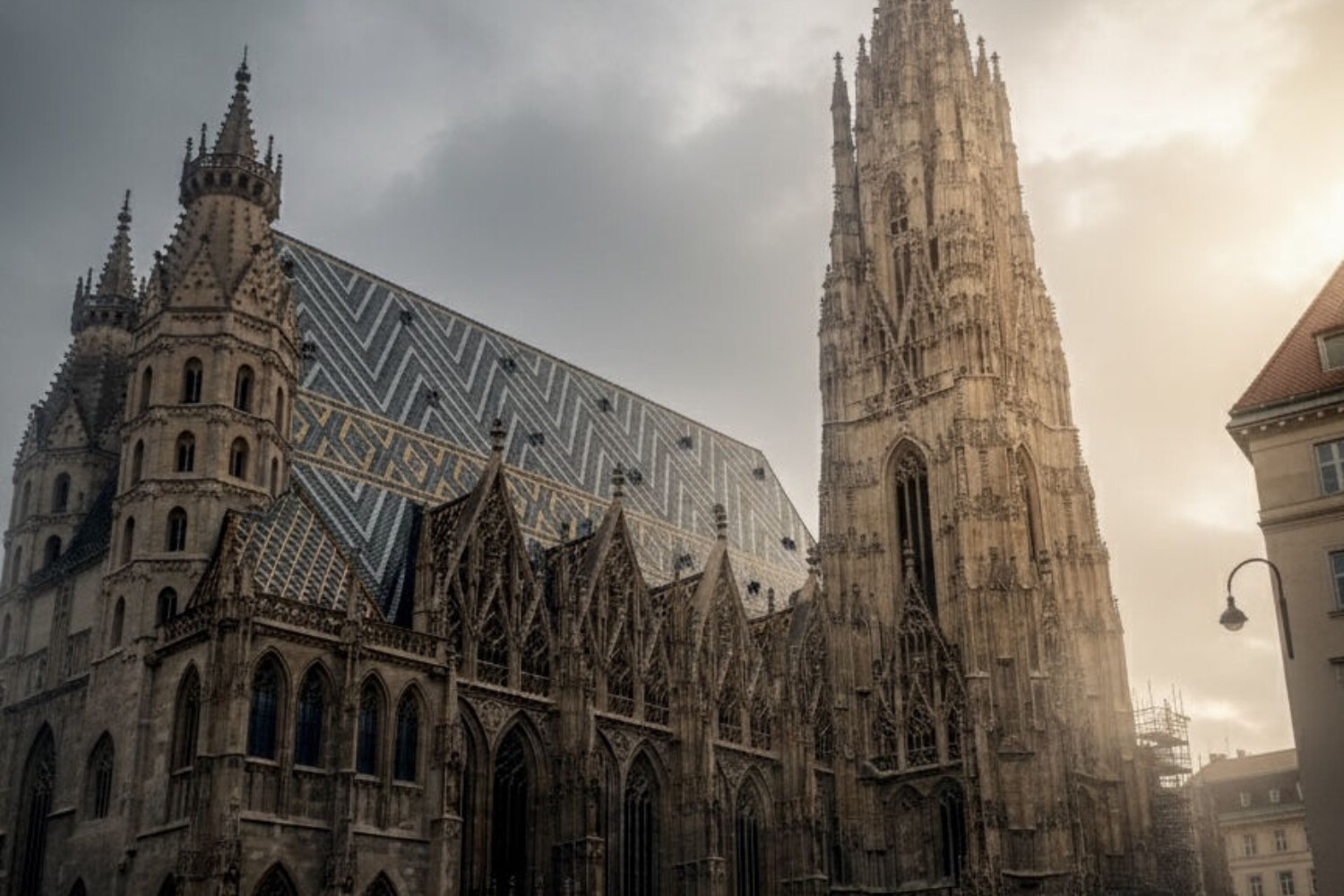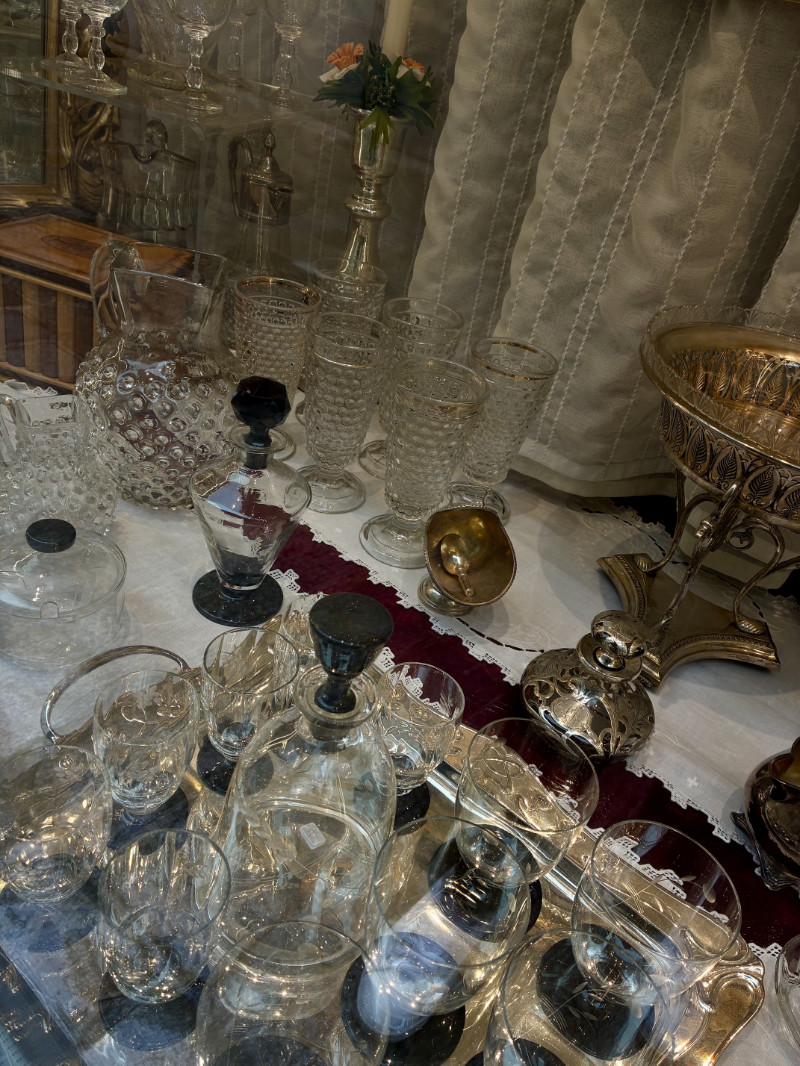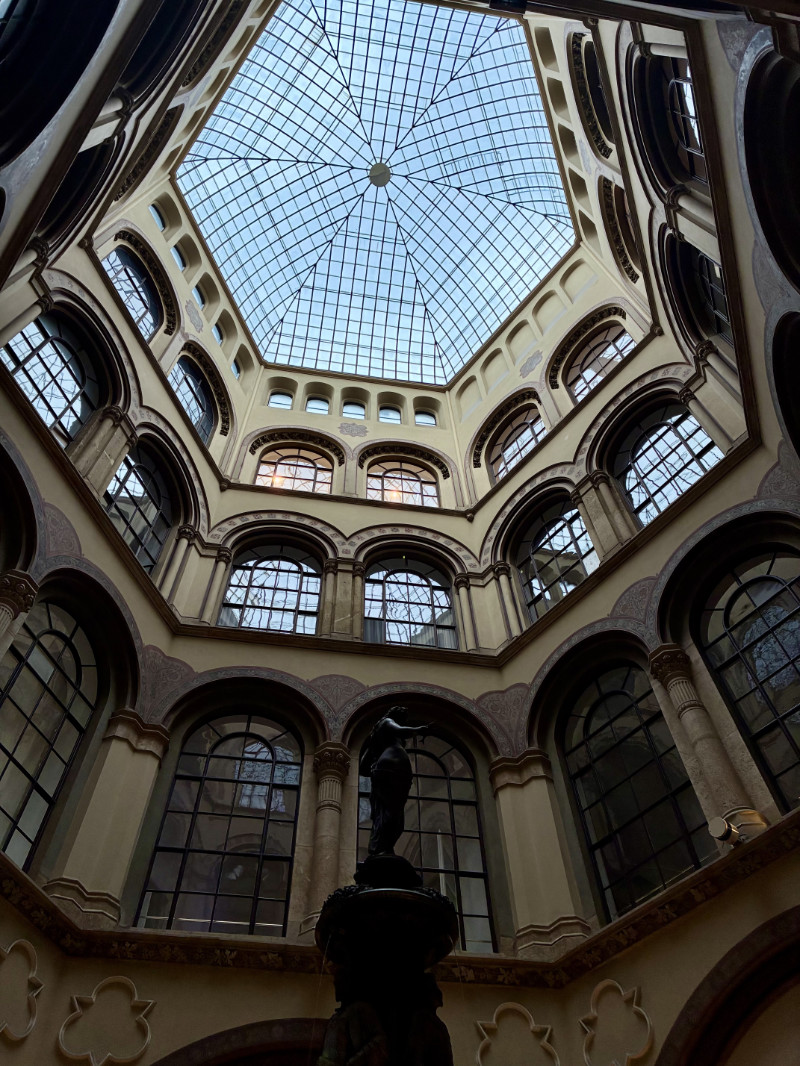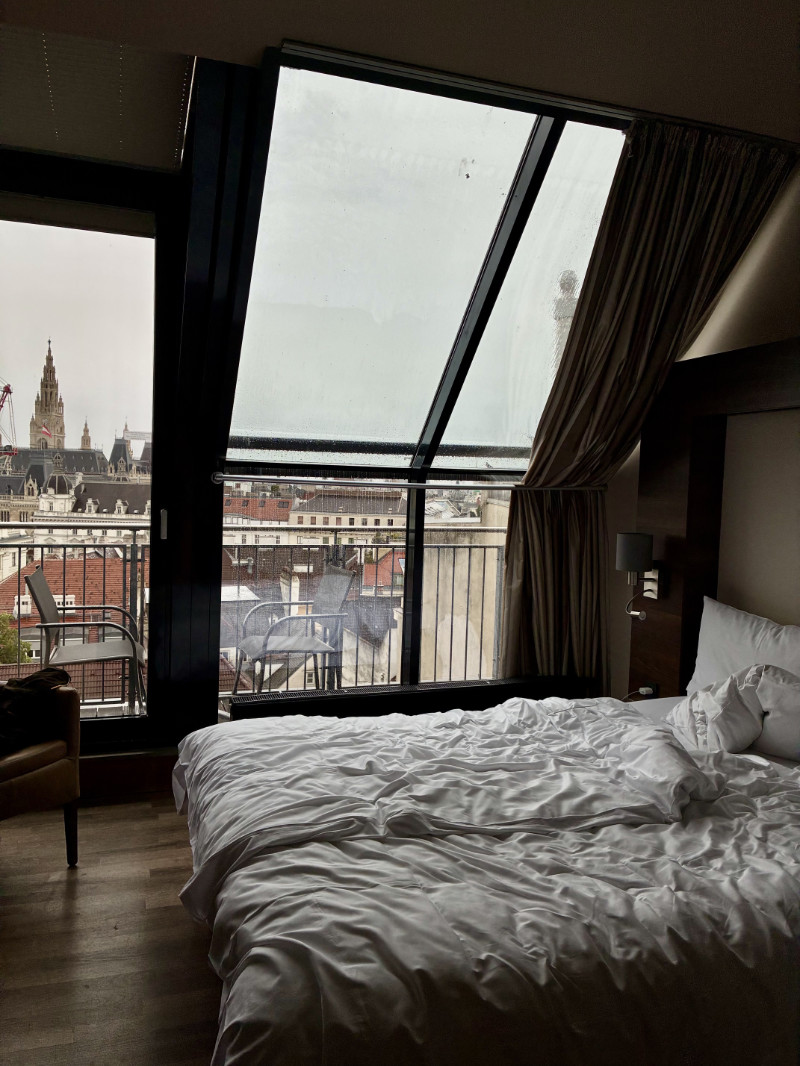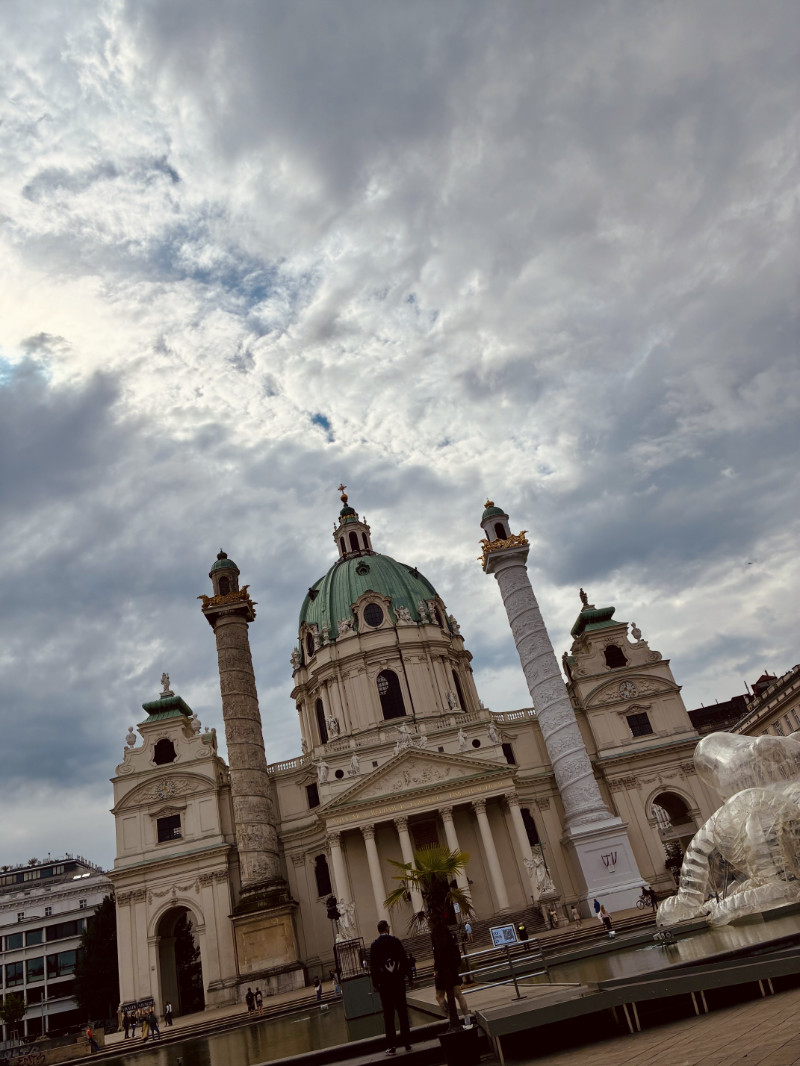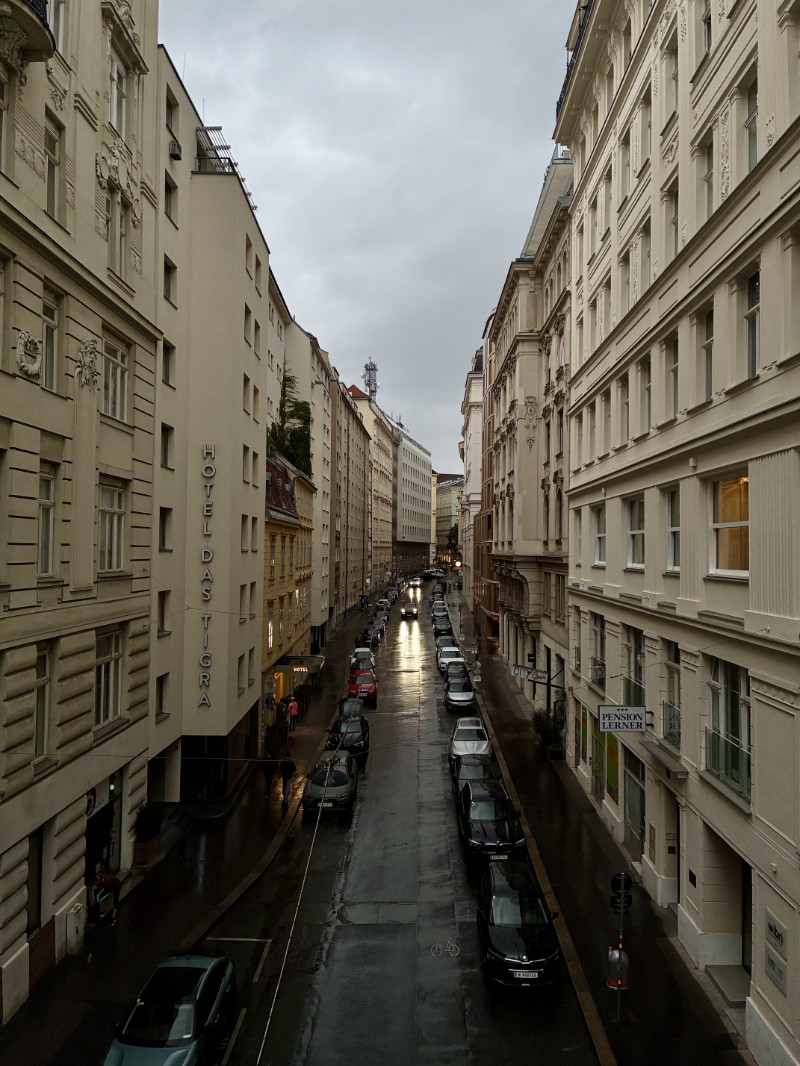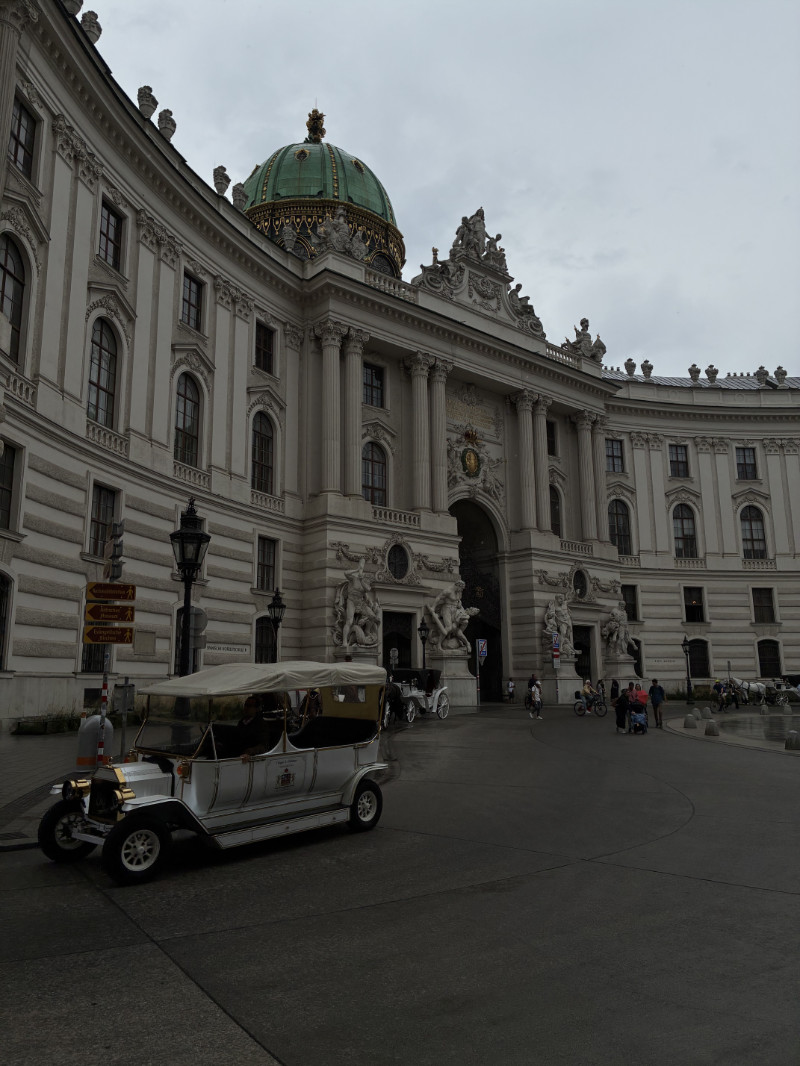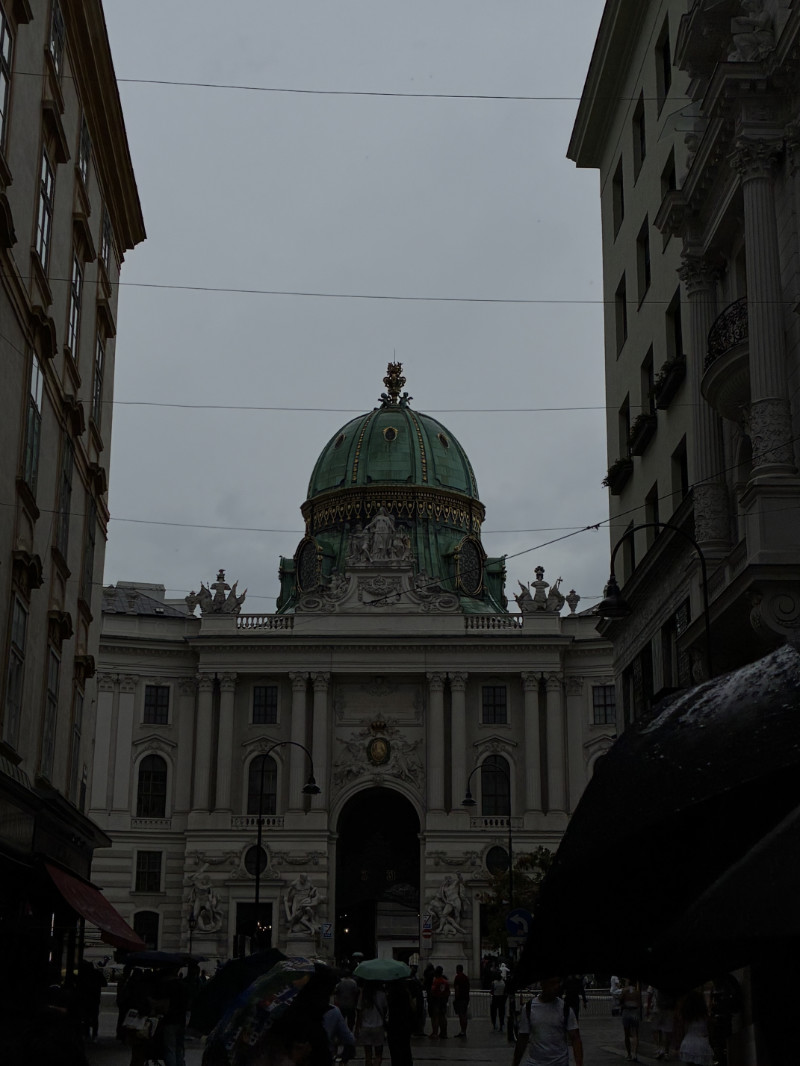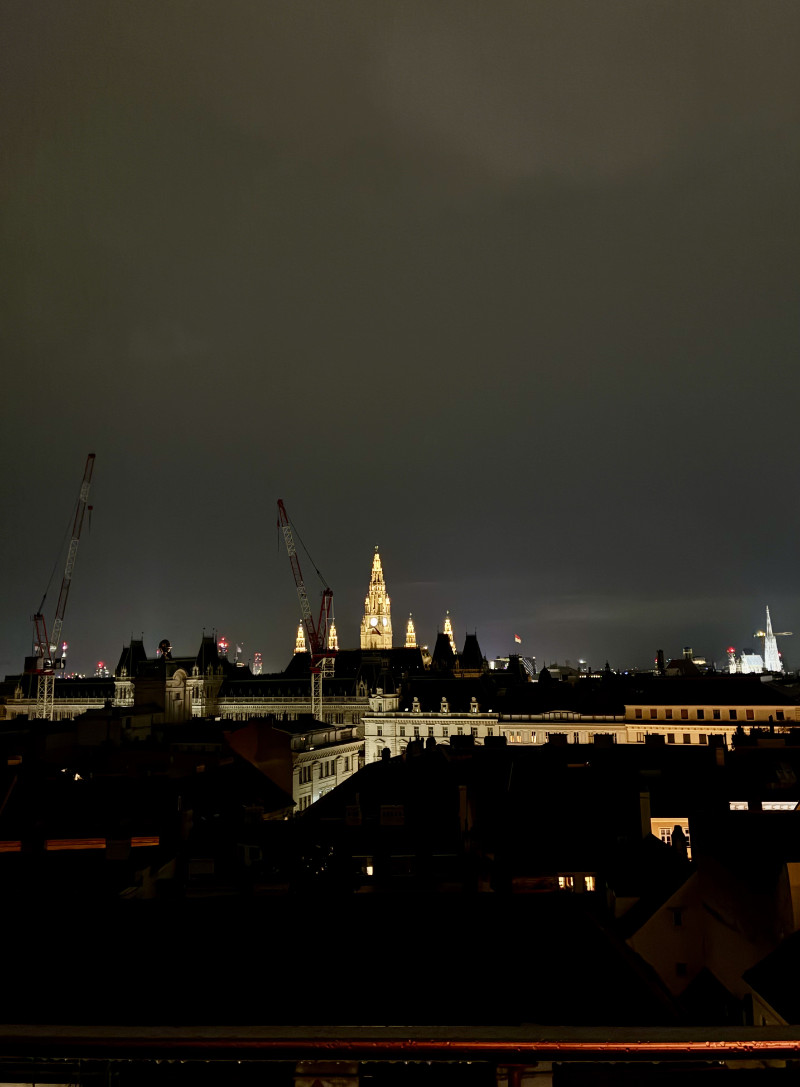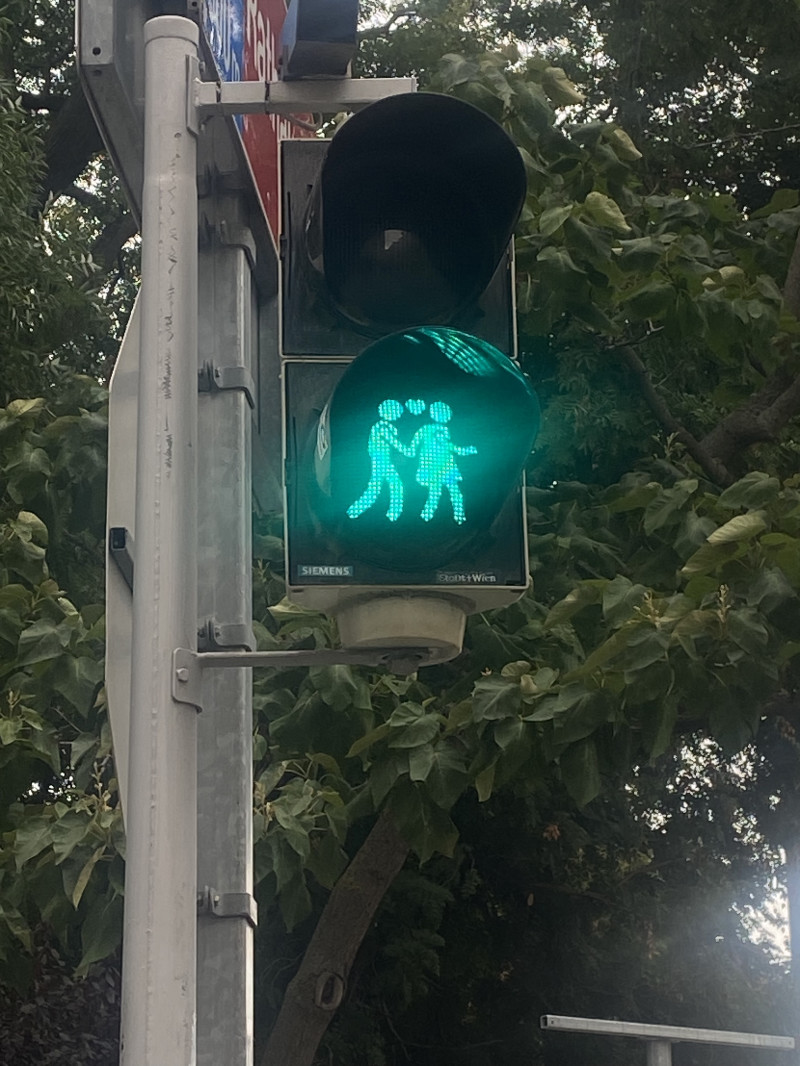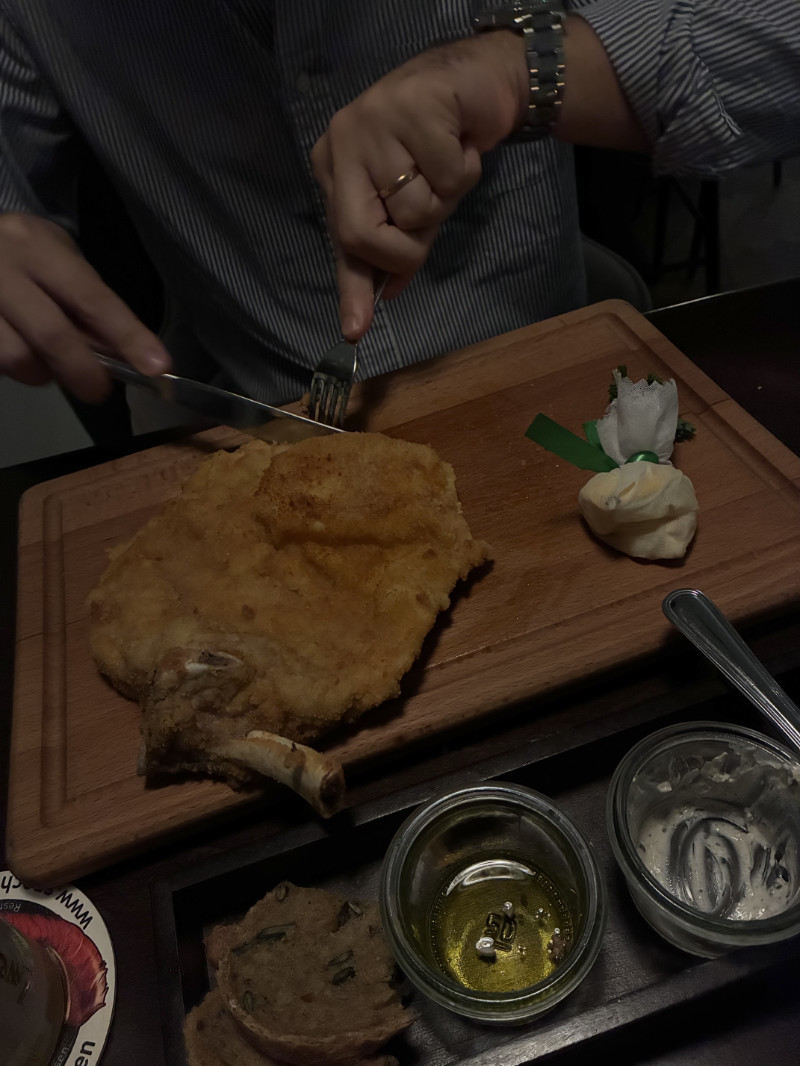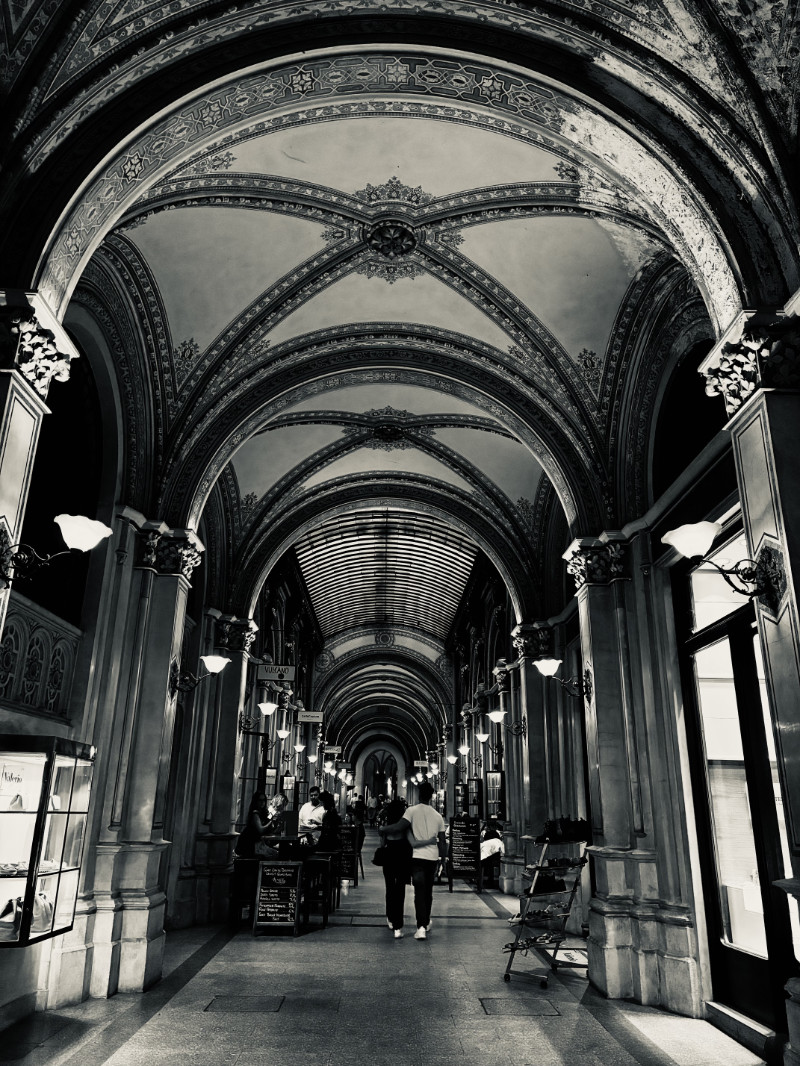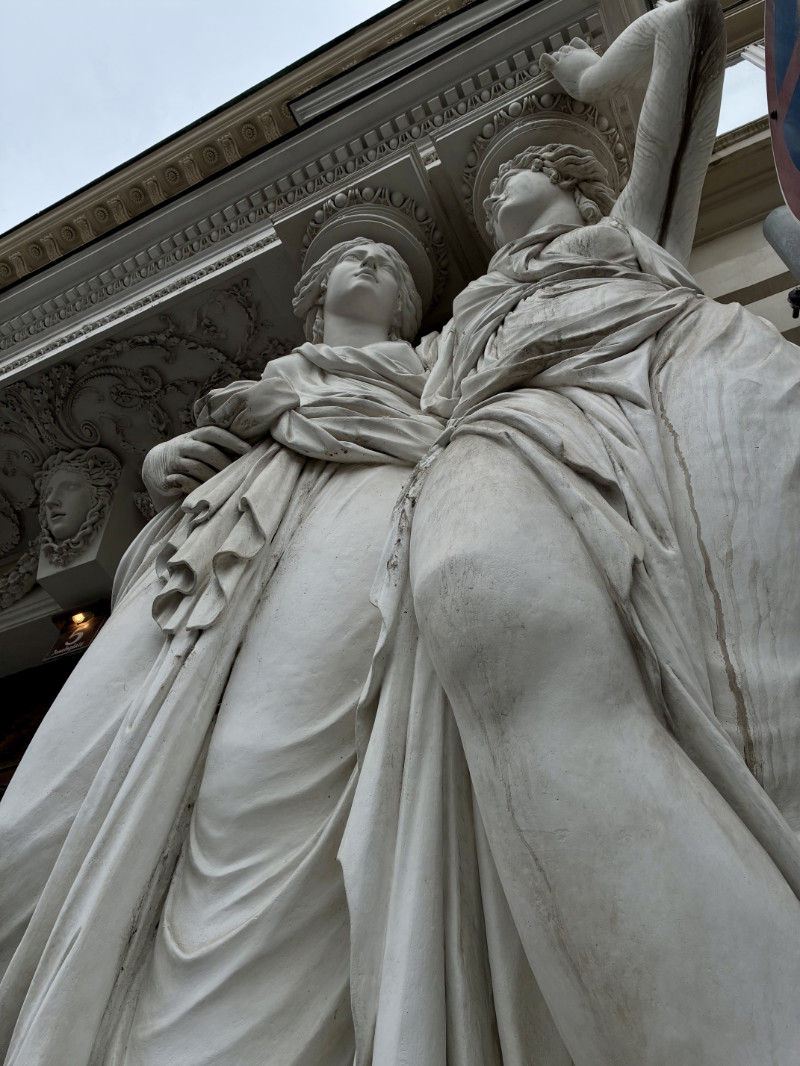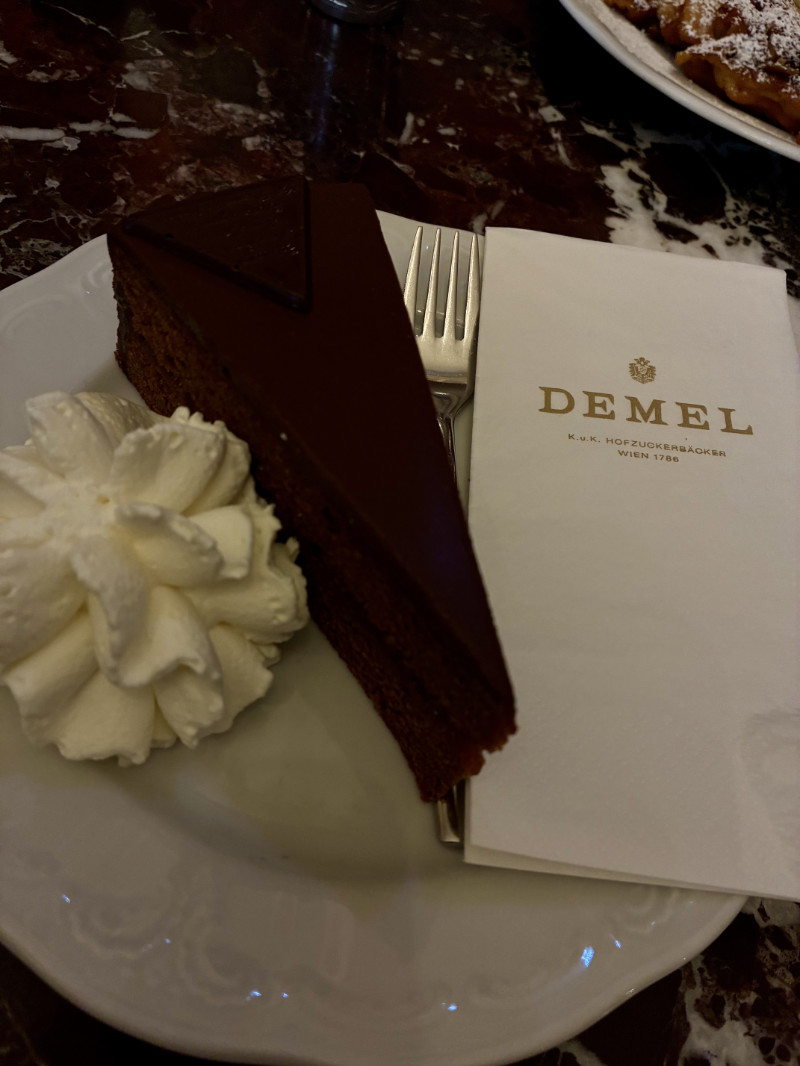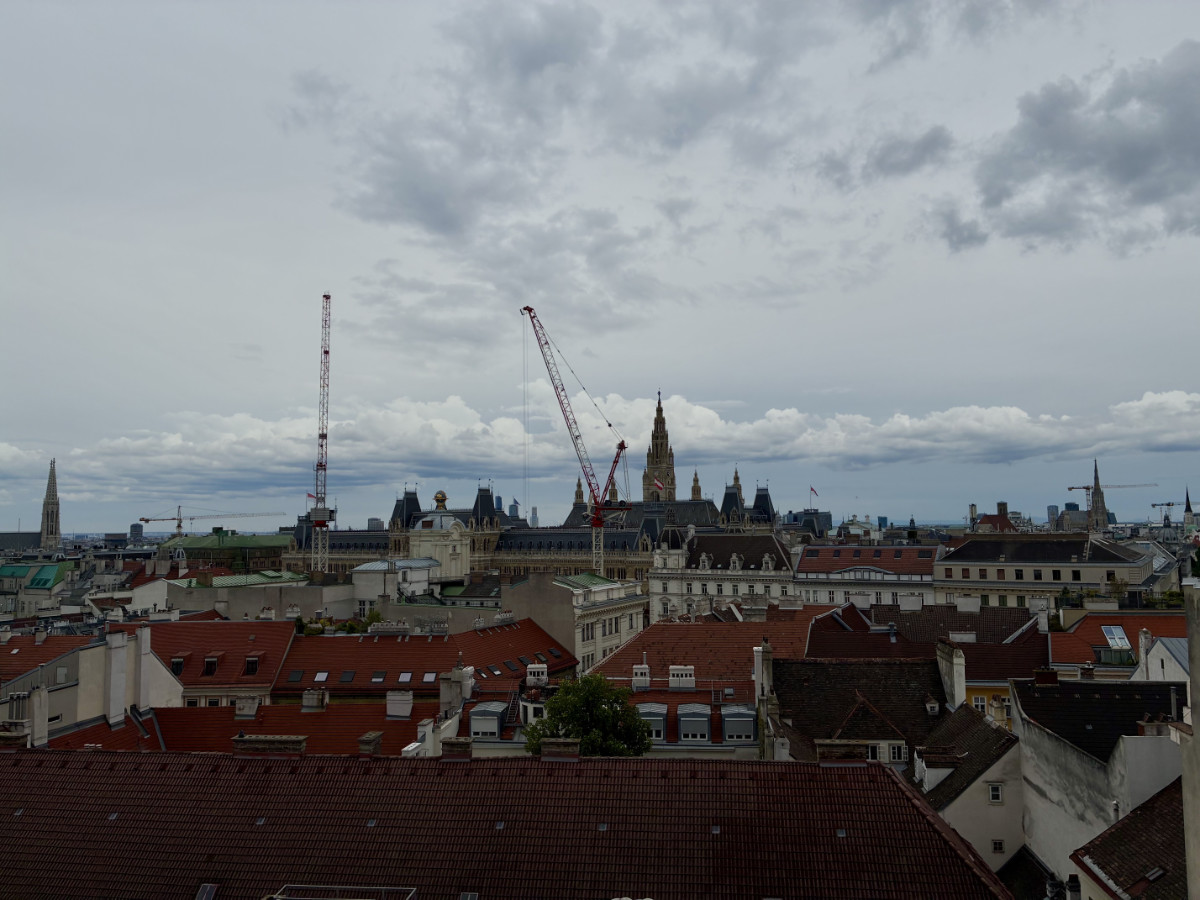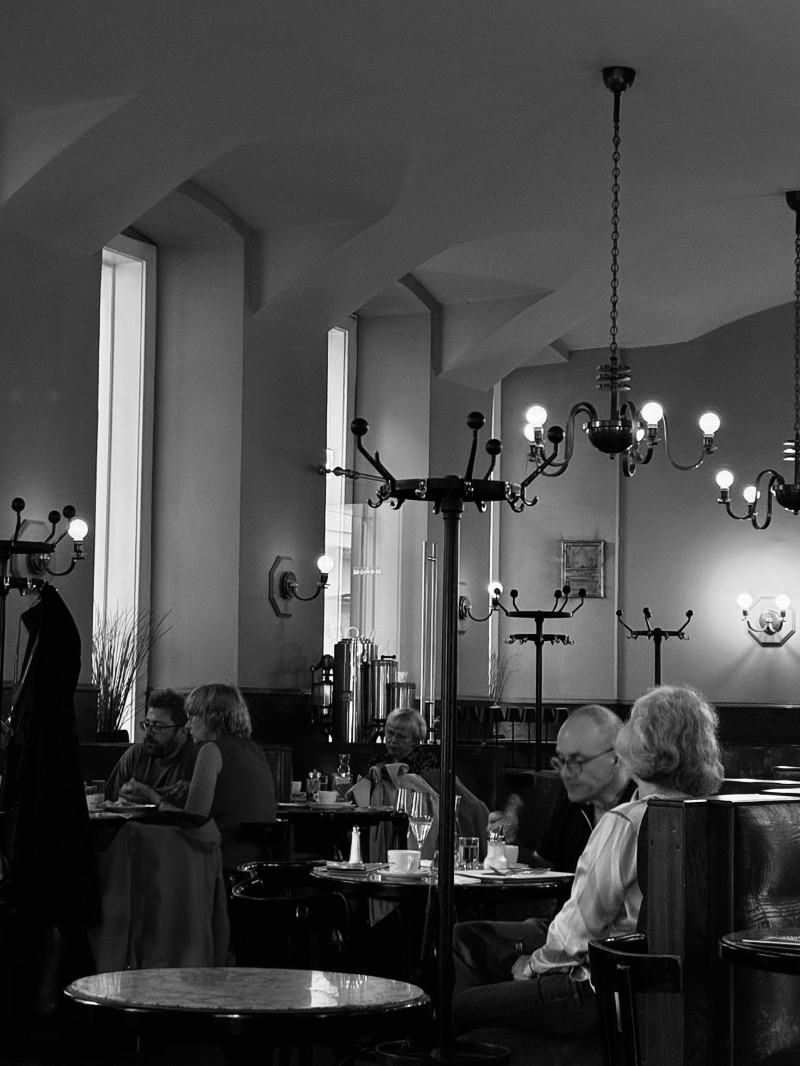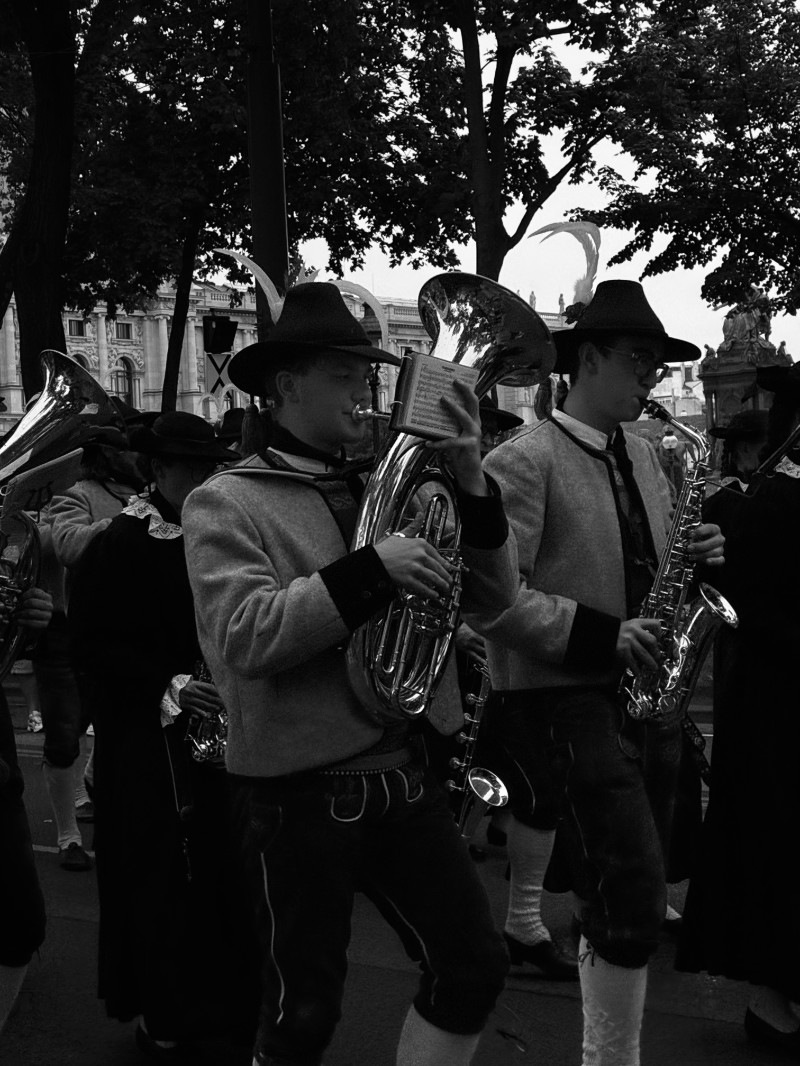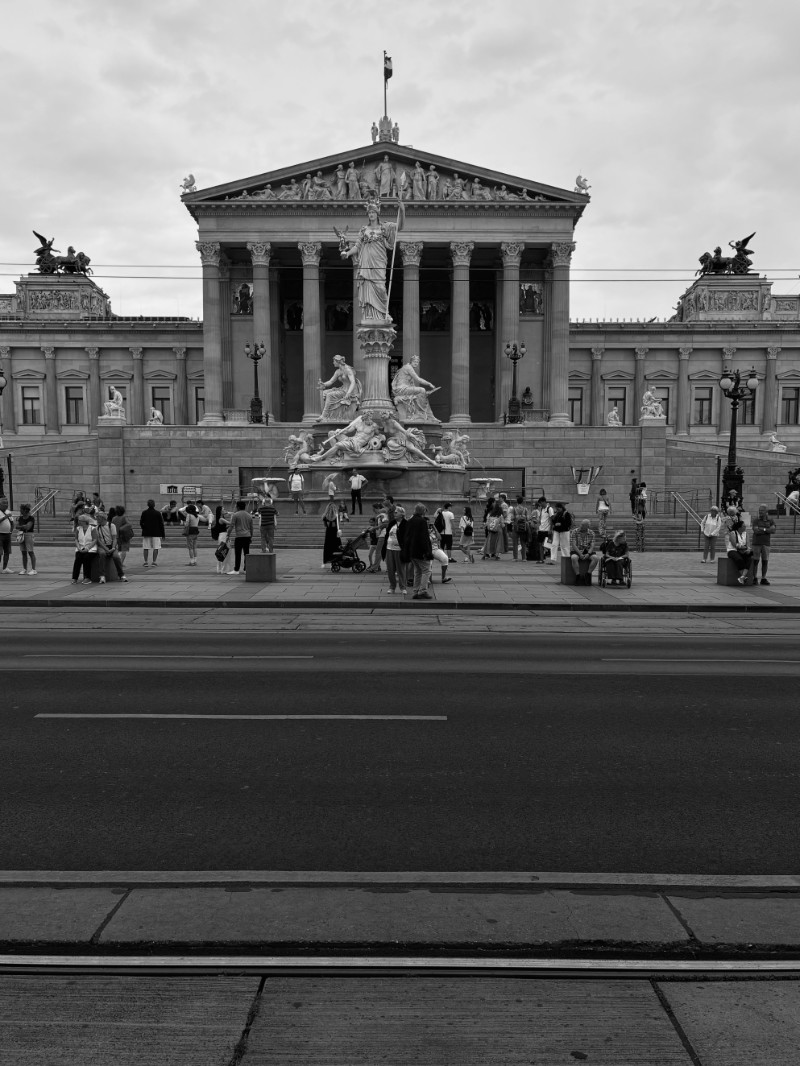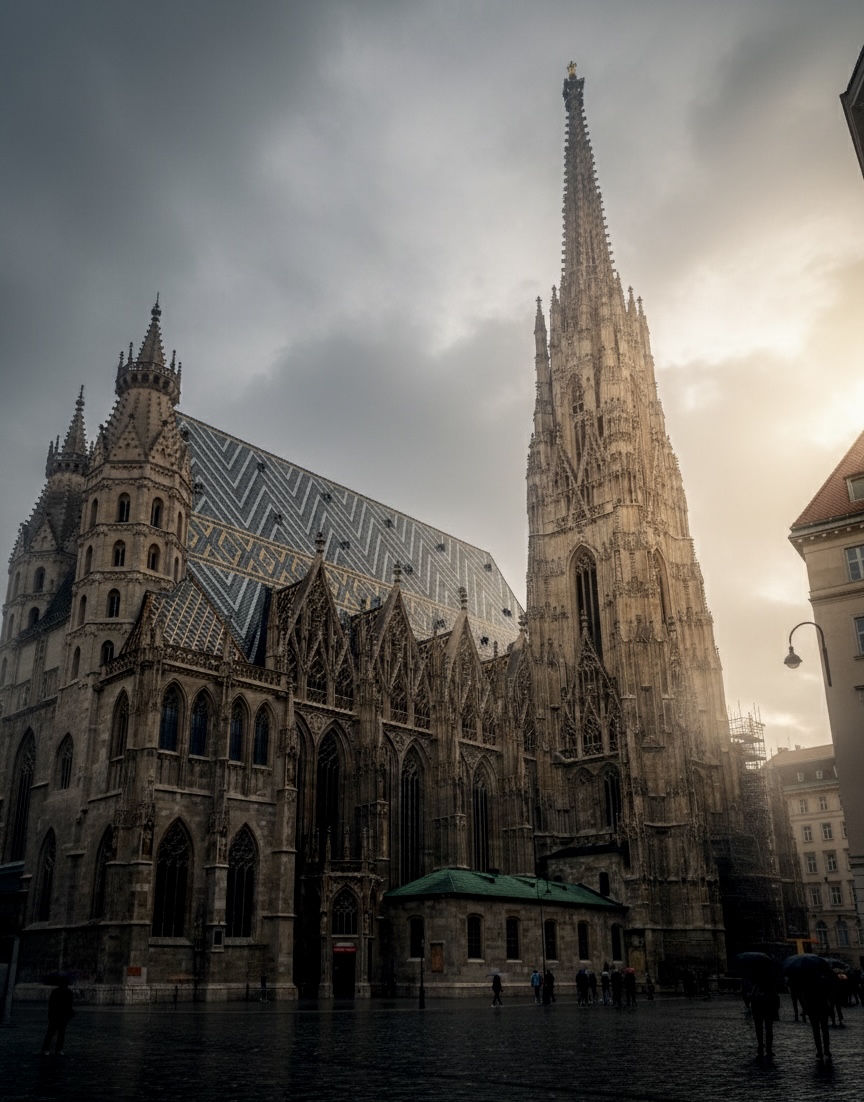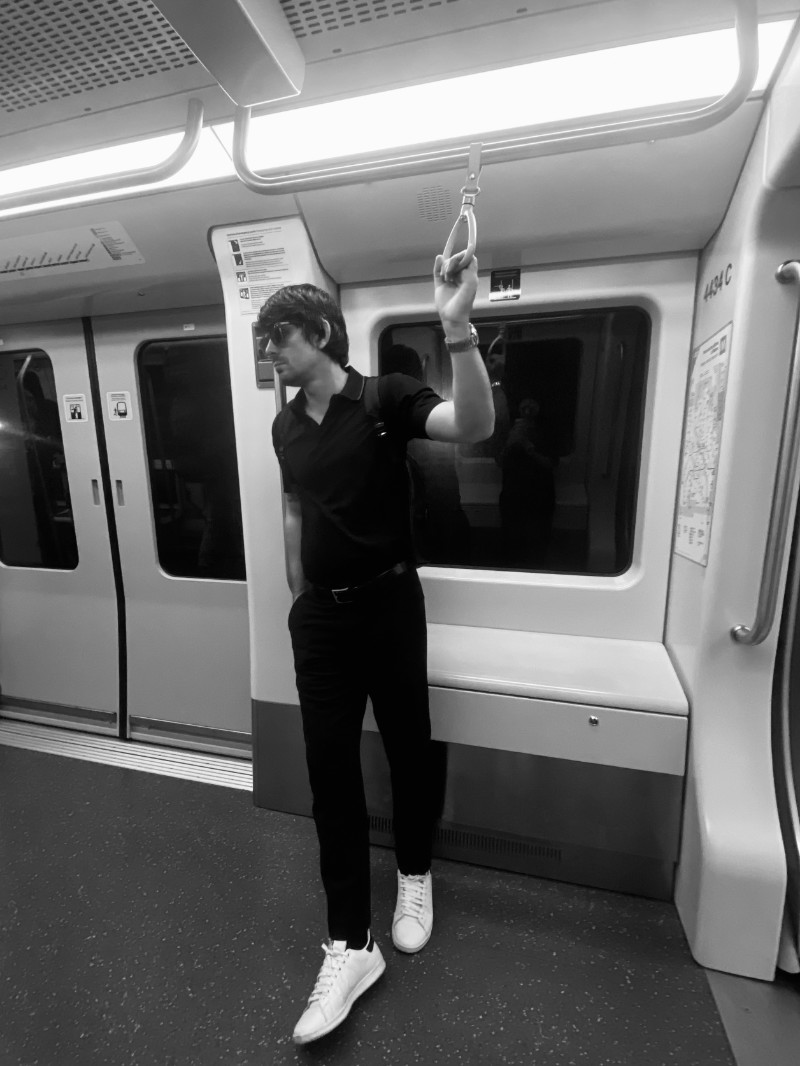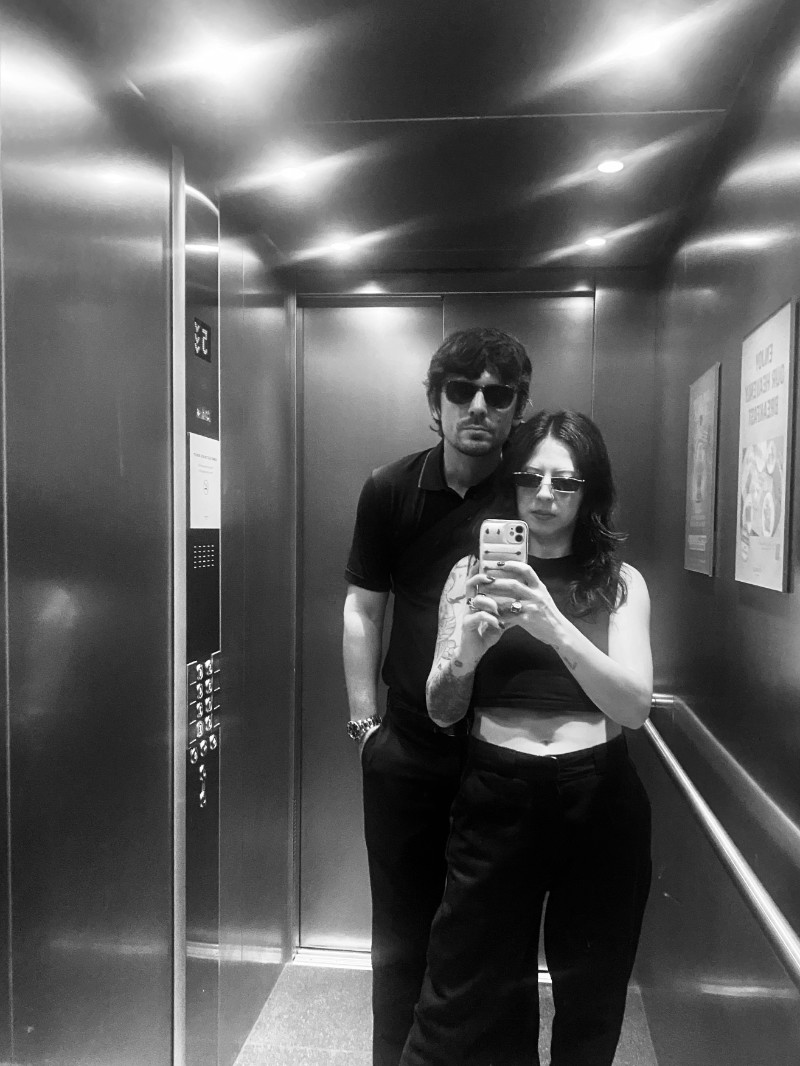It all started with a mirror in an elevator. Me and you, dressed in black, two shadows trying to freeze time with a picture. Vienna greeted us like that, with a metallic silence and a reflection that forces you to ask who you really are when nobody’s watching.
Here’s the truth: this is not a travel guide. I won’t tell you which museums to visit, what tickets to buy, or which top ten lists to follow. This is a different kind of journey. One that crawls under your skin and changes the rhythm of your heart without asking for permission.
Vienna, for me, was a wound that doesn’t burn but keeps pulsing. A city that doesn’t embrace you with the noisy enthusiasm of Paris or the chaos of Berlin. It watches you in silence, lets you wander through its palaces, and then, when you least expect it, it digs into you.
Vienna travel story. That is how I’d call it. A story without a proper plot, just fragments: metro rides, cathedrals, cakes, statues, rain, music. And in each of those fragments, a piece of me, of us, of anyone who’s ever tried to figure out if traveling is a way of losing yourself or finding yourself.
The subway as a confessional
You know what I realized standing in the Vienna subway? Those tunnels feel like an underground confession booth. It’s not the chaos of Milan, not the sweaty madness of London. Everything is slower, suspended, as if every passenger is a character that slipped out of an unfinished novel.
I held on to the strap, head slightly down, sunglasses hiding me, feeling like a stranger pretending to belong. Subways are places where nobody wants to look at anyone. Yet somehow, I felt seen without eyes on me.
And then Bukowski came to mind: “The people are the greatest show on earth. And you don’t even have to pay for the ticket.” That’s it, isn’t it? Traveling isn’t about collecting landmarks, it’s about standing in an empty carriage, the hum of the train reminding you you’re moving forward even if you have no idea where.
The cathedral that never ends
And then came St. Stephen’s Cathedral. Christ, that spire looked like it wanted to pierce the sky. Gothic isn’t just architecture. It’s a way of screaming without sound.
Looking at it, I thought: man builds cathedrals not for God, but to feel less fragile. Stone by stone, century after century, as if stacking blocks could protect you from the invisible.
But standing there in front of it, I felt tiny. Just a grain, a passerby, someone who will turn to dust in a hundred years while those towers keep scratching the clouds.
Parliament and the weight of marble
We crossed the square and stood before Parliament. Greek columns, statues frozen in posture. And yet, marble is heavy. You can feel it. It isn’t just beauty, it’s a burden.
I wondered: how many decisions were made inside? How many promises broken, how many laws shaped the lives of people who will never see these columns up close?
Meanwhile, tourists were taking selfies, laughing. I don’t blame them. Maybe it’s necessary, to lighten the weight of history with a smile. But somewhere deep down, I heard this voice: “History is never neutral. It watches you, it judges you.”
Music in the streets
There was a parade. Men in traditional clothes, brass instruments shining, feathers on their hats. Music filled the damp air like an old wind.
And I thought, Vienna isn’t only Mozart and Strauss. It’s also this: brass instruments spitting out notes, kids marching like time never moved on.
There was something beautiful in that rhythm. Not refined, not perfect. Human. A little off-key, a little rough. And because of that, true.
The cafés that never end
Then we slipped into a café. You know the kind, dark wood, heavy chandeliers, waiters moving slow, as if they belonged to a film from another century.
That’s when I understood why Vienna is famous for its cafés. It’s not about the coffee. It’s about the time they give you. Sitting there means entering a bubble where the clock stops running.
As I watched couples whispering, old men reading, distracted tourists, a strange melancholy washed over me. Maybe that’s what traveling is for, to sit in an unknown room and, for a fleeting moment, feel like you could belong there.
Rooftops and scars
From above, Vienna looks less polished. Cranes cutting into the sky, red rooftops piling into each other, heavy clouds hanging low. It’s a city unafraid to show you its scars.
And I thought, maybe people should be the same. Show the cranes, the construction sites, the unfinished parts. Not just the glossy façades.
The bitter sweetness of a Sacher
We couldn’t avoid the Sacher. At Demel, with that white cream looking like snow beside the dark chocolate. I took a bite and realized it wasn’t what I expected. Not too sweet. More complex. A bitter aftertaste that lingered on the tongue.
And honestly? It felt perfect. Because Vienna was never sweet in a simple way. It’s elegant, austere, melancholic. The Sacher is its metaphor. Sweetness that doesn’t comfort, but challenges you.
The statues and the mute giants
Walking down the streets, I looked up at those statues towering over me. Marble bodies with fake eyes, frozen in judgement. You feel small, observed by those who don’t breathe anymore.
But here’s the thing: nothing is eternal. Not even marble. Everything erodes. Maybe that’s the lesson, even giants fall, and our fragility is the most authentic thing we carry.
Back to the elevator mirror. Same image, same reflection. But we’re not the same anymore. Vienna passed through us, and now we carry a bit of its gothic silence, its bitter sweetness, its off-key music.
You know what I realized? Traveling isn’t about escaping, or collecting pictures. It’s about facing a mirror in a foreign city and discovering a face you didn’t know you had.
Vienna travel story. That is what I’ll call it. Not an itinerary, but an encounter with ourselves, between shadows and reflections.
